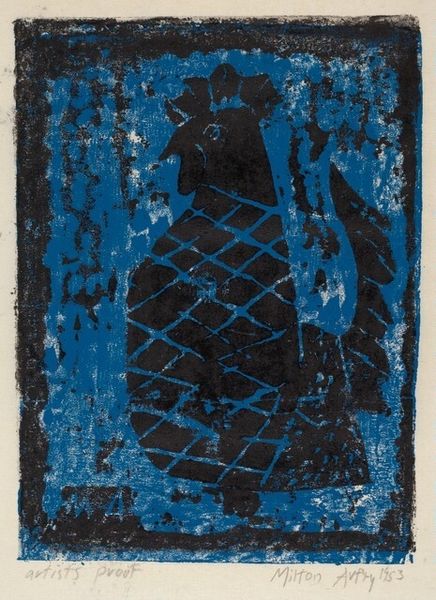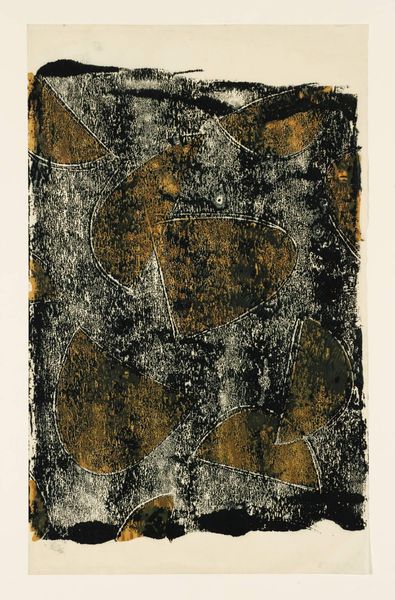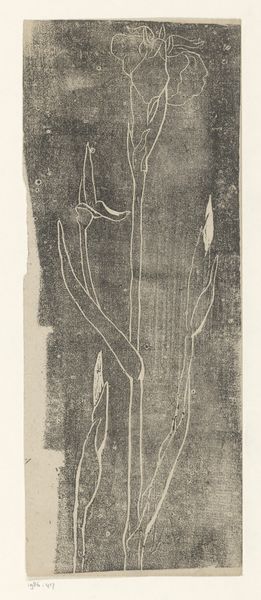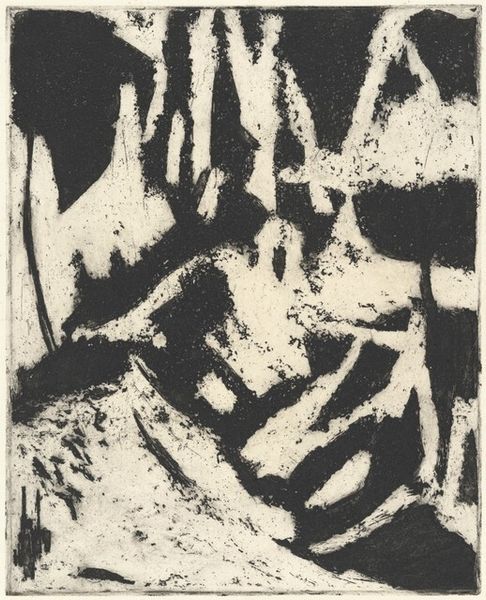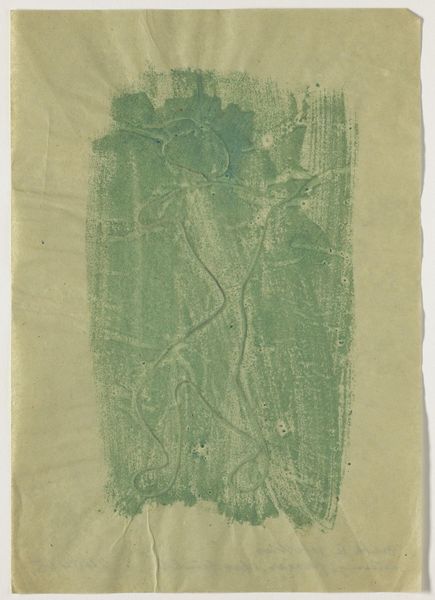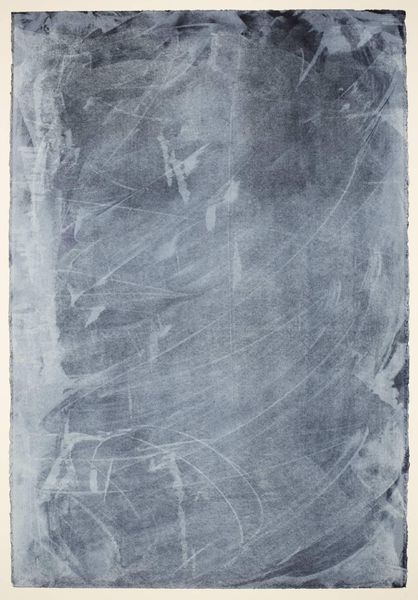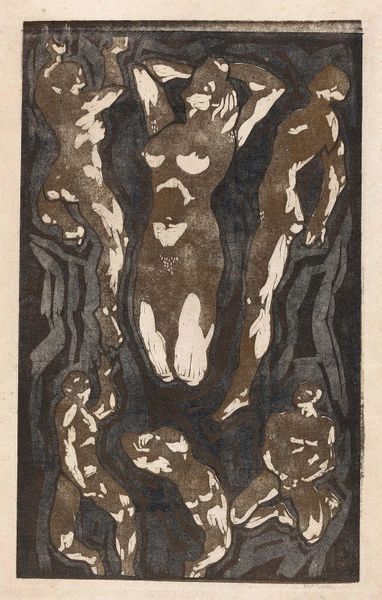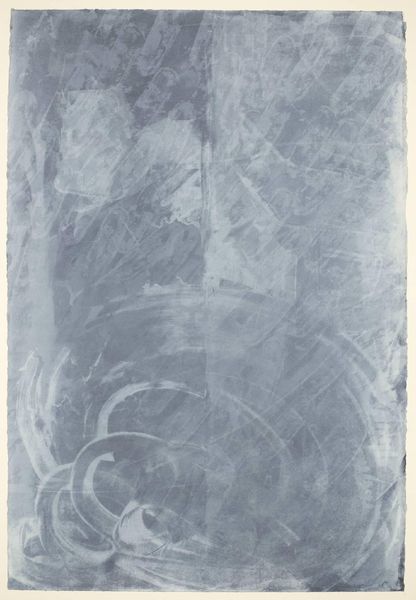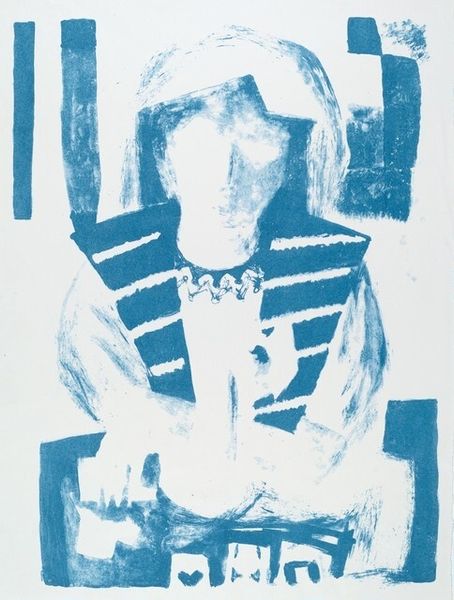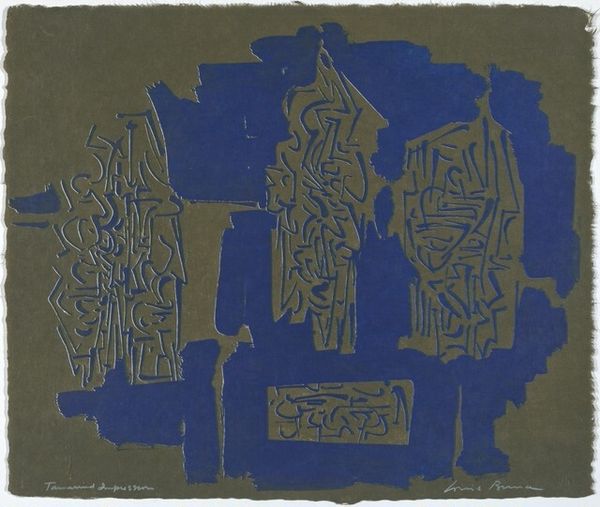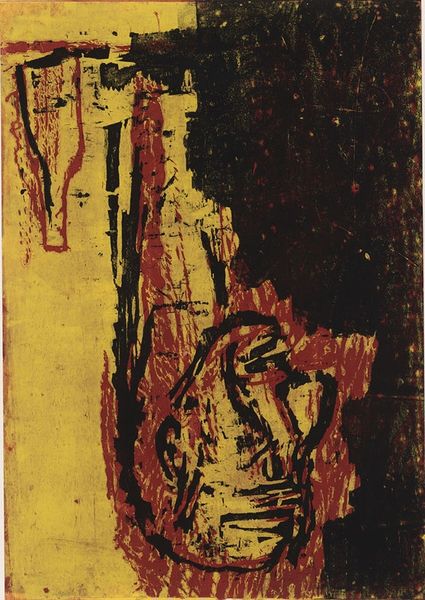
Copyright: Willi Baumeister,Fair Use
Editor: Here we have Willi Baumeister’s "Aru Dark Blue" from 1955, a matter-painting that feels incredibly tactile despite its relatively flat appearance. I'm struck by how the blue pigment seems almost sculptural. What do you see when you consider the material aspects of this piece? Curator: Well, given Baumeister's historical context post-World War II, the "matter-painting" label speaks volumes. Artists were actively searching for new materials, repurposing industrial scraps and debris. How do you think the artist created those lines and textured patches? Editor: Perhaps using a palette knife or some sort of textured implement to apply and scrape away the paint? The process seems really integral to the final image. Curator: Exactly! It’s a far cry from the slick surfaces of pre-war art. Instead, there’s a direct engagement with the materiality of paint itself. Consider too the implications: a move away from traditional painting techniques suggests a rejection of older social orders and a quest for a new artistic language rooted in everyday experience and potentially available to anyone. Is that textured quality, the “matter,” purely aesthetic or is it saying something? Editor: I suppose the roughness could be interpreted as representing the damage and struggle of the postwar era, mirroring a societal reckoning, and perhaps a hopeful turn to more raw, ‘real’ elements for truth? Curator: Precisely! Furthermore, examine how the application interacts with the flatness often found in expressionism and early abstraction – he emphasizes the making of art over just the image. This gives the viewer access to creation, as an act of material expression. What does Baumeister tell us of modern creation? Editor: That's fascinating. I hadn’t considered the socio-political dimension of his material choices, so I will explore more. It makes me look at abstraction and geometric shapes through a different, more tangible, lens. Curator: Agreed! And that understanding will help unravel much in the art of the period!
Comments
No comments
Be the first to comment and join the conversation on the ultimate creative platform.
